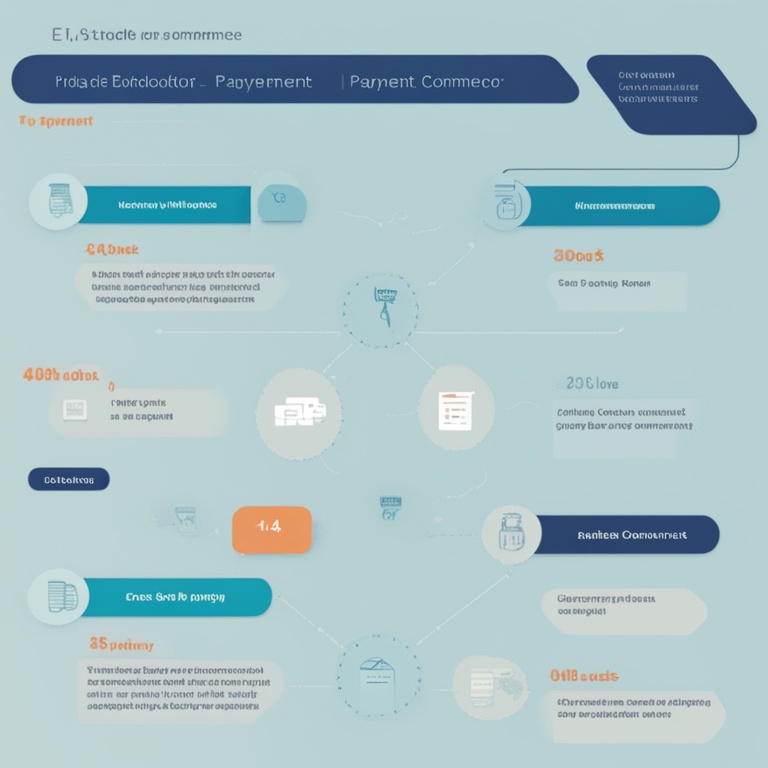

In the realm of cross - border e - commerce, the choice of payment methods is a crucial factor that can significantly impact the success of a business. With the globalization of markets and the increasing popularity of online shopping across international boundaries, merchants need to carefully consider various aspects when selecting the right payment methods.
1. Understanding the Landscape of Cross - border E - commerce Payments
Cross - border e - commerce involves transactions between buyers and sellers located in different countries. This complexity is further compounded by differences in regulatory environments, currency exchange rates, and consumer preferences. The payment methods available can range from traditional credit and debit cards to digital wallets, bank transfers, and alternative payment methods specific to certain regions.
Credit and debit cards remain one of the most widely used payment methods in cross - border e - commerce. They offer convenience and familiarity to consumers in many parts of the world. However, there are challenges associated with card payments, such as fraud risks and the need for secure payment gateways. Merchants need to ensure that they have proper fraud detection and prevention mechanisms in place to safeguard their transactions.
Digital wallets are gaining significant traction in cross - border e - commerce. These wallets, such as PayPal, Alipay, and WeChat Pay in some regions, store users' payment information securely and allow for quick and seamless transactions. They often offer additional features like buyer protection, which can enhance consumer confidence. Moreover, digital wallets can simplify the checkout process, reducing cart abandonment rates.
Bank transfers, on the other hand, are considered a more traditional but still relevant payment method. While they may not be as instant as some other options, they are often preferred for high - value transactions. However, bank transfers can be subject to longer processing times and higher fees in some cases, especially for international transfers.
2. Factors Influencing the Choice of Payment Methods
2.1. Market and Customer Preferences
Different markets have distinct preferences when it comes to payment methods. For example, in some European countries, bank transfers are highly popular, while in the United States, credit cards dominate. In Asia, digital wallets have seen explosive growth, especially in countries like China. Understanding the target market's payment habits is essential for merchants looking to expand globally.
Customer demographics also play a role. Younger consumers may be more inclined towards digital wallets and new - age payment solutions, while older consumers may still prefer traditional methods like credit cards or bank transfers. Additionally, factors such as the level of digital literacy in a particular market can influence the acceptance of different payment methods.
2.2. Cost Considerations
Each payment method comes with its own cost structure. For merchants, this includes transaction fees, currency conversion fees (in the case of cross - currency transactions), and potentially setup and maintenance costs for payment gateways. Credit card companies typically charge a percentage of the transaction value as a fee, which can vary depending on the card type and the merchant's volume of transactions.
Digital wallets may also have fees, although some offer competitive rates, especially for larger merchants. Bank transfers can be costly for international transactions, with both the sending and receiving banks often levying charges. Merchants need to carefully analyze these costs and factor them into their pricing strategies to ensure profitability.
2.3. Security and Fraud Prevention
Security is of utmost importance in cross - border e - commerce payments. Merchants are responsible for protecting their customers' payment information and ensuring the integrity of transactions. Payment methods that offer robust security features, such as encryption and tokenization, are more desirable.
Fraud is a significant concern, and different payment methods have varying levels of susceptibility. Credit cards are often targeted by fraudsters, and merchants need to invest in fraud prevention tools like address verification, CVV checks, and fraud scoring algorithms. Digital wallets also implement security measures, but they may face different types of threats, such as account hijacking. Bank transfers, while generally considered more secure in terms of data protection, can be vulnerable to phishing attacks if customers are not vigilant.
2.4. Regulatory and Compliance Requirements
Each country has its own regulatory framework governing e - commerce payments. Merchants need to be aware of these regulations, including anti - money laundering (AML) and know - your - customer (KYC) requirements. For example, in some regions, there are strict regulations regarding the storage and transfer of payment data.
Payment service providers must also comply with these regulations. Merchants need to ensure that the payment methods they choose are supported by providers who are fully compliant. Failure to comply with regulatory requirements can result in significant fines and reputational damage.
3. Evaluating Different Payment Methods for Cross - border E - commerce
3.1. Credit and Debit Cards
As mentioned earlier, credit and debit cards are a well - established payment method. They offer wide acceptance, which is beneficial for merchants targeting a global customer base. Major card networks like Visa, Mastercard, and American Express have a large international presence.
However, the associated costs can be a drawback. The transaction fees can be relatively high, especially for small - scale merchants. Additionally, the process of setting up a card payment gateway can be complex and time - consuming. Merchants also need to deal with chargebacks, which can occur if a customer disputes a transaction. This requires proper documentation and procedures to handle effectively.
3.2. Digital Wallets
Digital wallets provide a convenient and fast payment option. They are often integrated with mobile devices, making it easy for consumers to make purchases on - the - go. The security features offered by digital wallets, such as two - factor authentication, can enhance the safety of transactions.
One of the challenges with digital wallets is their limited acceptance in some regions. While they are popular in certain parts of the world, they may not be as well - known or widely used in others. Merchants also need to consider the compatibility of their e - commerce platforms with different digital wallets, which may require additional development efforts.
3.3. Bank Transfers
Bank transfers are a reliable payment method, especially for large - value transactions. They are often preferred by businesses for B2B e - commerce. The level of security associated with bank - to - bank transfers can be high, as the transactions are typically routed through secure banking channels.
Nevertheless, the long processing times and potential for high fees can be deterrents. Customers may be reluctant to use bank transfers for small - value purchases due to the inconvenience and cost. Merchants also need to provide clear instructions to customers regarding the bank transfer process to avoid confusion.
3.4. Alternative Payment Methods
There are also alternative payment methods that are specific to certain regions or industries. For example, in some European countries, there are local payment methods like iDEAL in the Netherlands or Sofort in Germany. These methods are often designed to meet the unique needs of the local market and can be very popular among domestic consumers.
In the e - gaming industry, there are payment methods tailored to the specific requirements of gamers, such as prepaid cards and virtual currency payments. Merchants operating in these niche markets need to evaluate these alternative payment methods to better serve their customers.
4. Strategies for Selecting the Right Payment Methods
4.1. Research and Market Analysis
Merchants should conduct in - depth research on the target markets they plan to enter. This includes analyzing market trends, consumer preferences, and the competitive landscape. By understanding the payment behavior of the local consumers, merchants can make more informed decisions about which payment methods to offer.
Market analysis should also consider the growth potential of different payment methods in the target market. For example, if digital wallets are expected to grow rapidly in a particular region, it may be beneficial for merchants to invest in integrating these payment options early on.
4.2. Partnering with Payment Service Providers
Choosing the right payment service providers is crucial. These providers act as intermediaries between merchants and the payment networks. They offer services such as payment gateway integration, fraud prevention, and currency conversion.
Merchants should look for providers with a good reputation, reliable customer support, and a track record of compliance with regulatory requirements. It is also important to compare the fees and services offered by different providers to ensure the best value for money.
4.3. Offering Multiple Payment Options
To maximize customer reach and satisfaction, merchants should consider offering multiple payment options. This allows customers to choose the method that is most convenient and comfortable for them. For example, a merchant could offer credit cards, digital wallets, and bank transfers to cater to different customer segments.
However, offering multiple payment options also comes with challenges. Merchants need to manage the integration and maintenance of each payment method, which can be resource - intensive. They also need to ensure that the checkout process remains seamless and user - friendly, regardless of the payment method chosen.
4.4. Continuous Monitoring and Optimization
The payment landscape in cross - border e - commerce is constantly evolving. Merchants need to continuously monitor the performance of their chosen payment methods. This includes tracking metrics such as conversion rates, transaction success rates, and customer feedback.
Based on the insights gained from monitoring, merchants can optimize their payment strategies. For example, if a particular payment method is experiencing a high rate of cart abandonment, the merchant may need to investigate and address the underlying issues, such as a complex checkout process or high fees.
In conclusion, choosing the right payment methods in cross - border e - commerce is a complex but essential task. Merchants need to consider a variety of factors, including market preferences, cost, security, and regulatory requirements. By carefully evaluating different payment methods and implementing effective strategies, merchants can enhance the customer experience, reduce risks, and drive the success of their cross - border e - commerce operations.